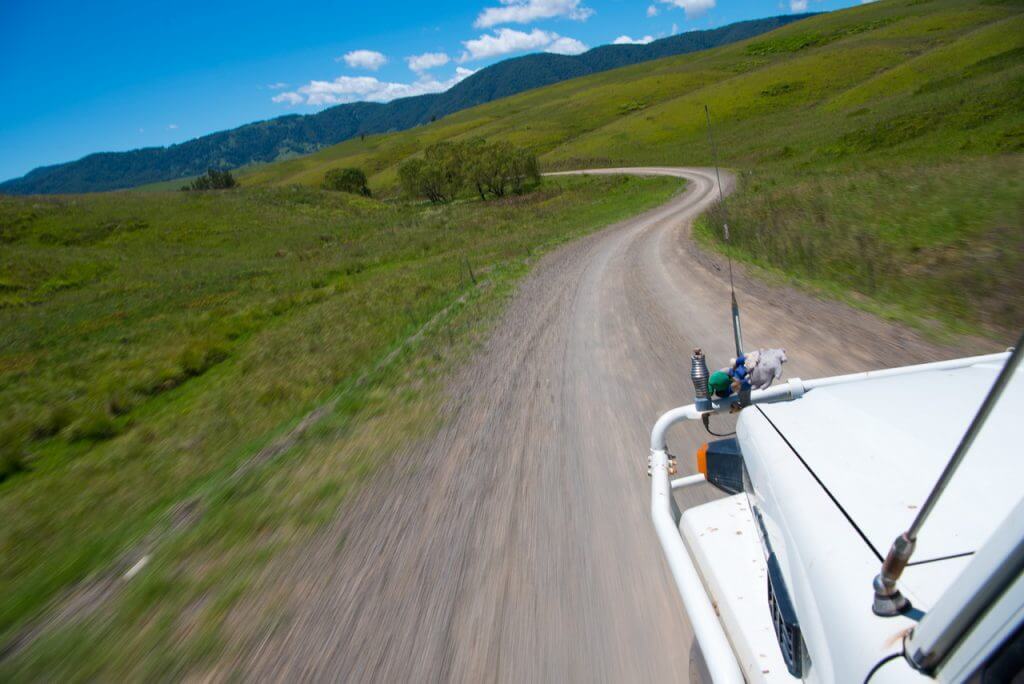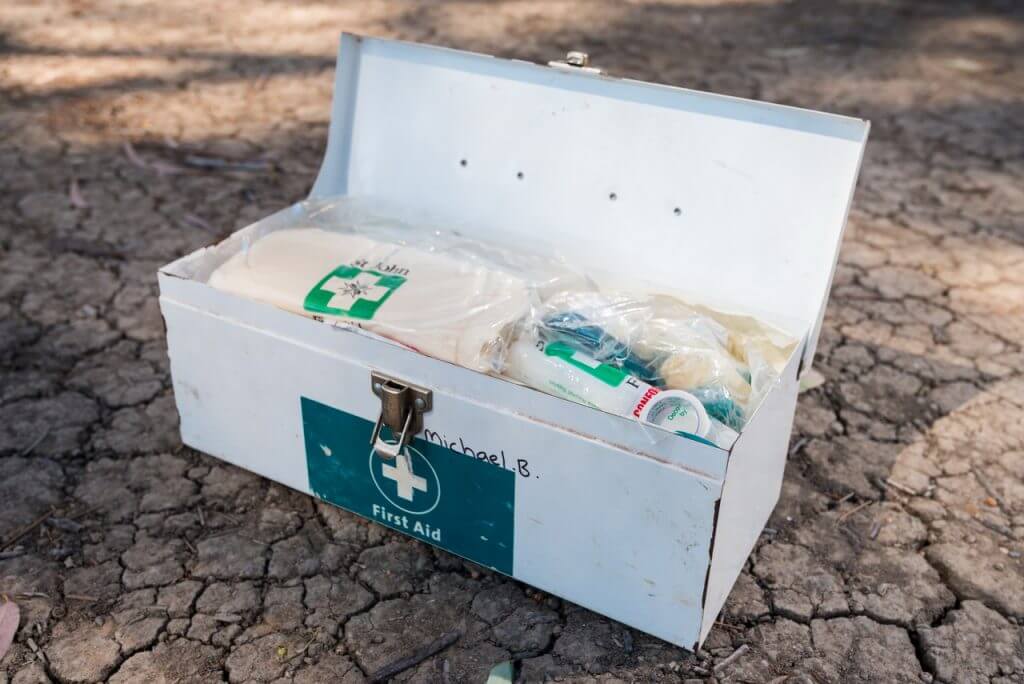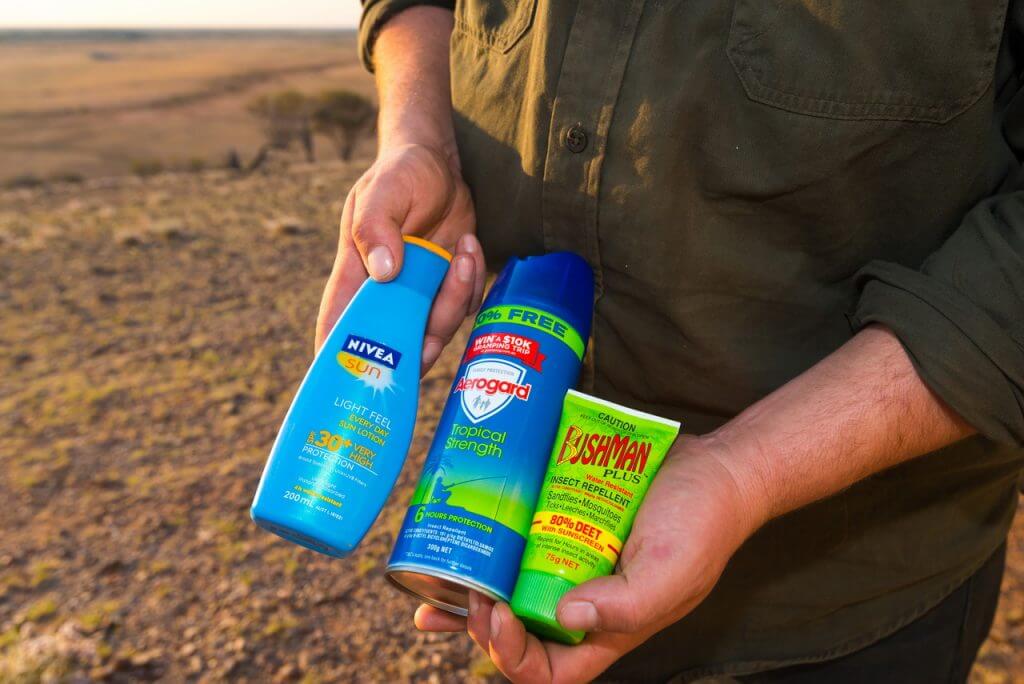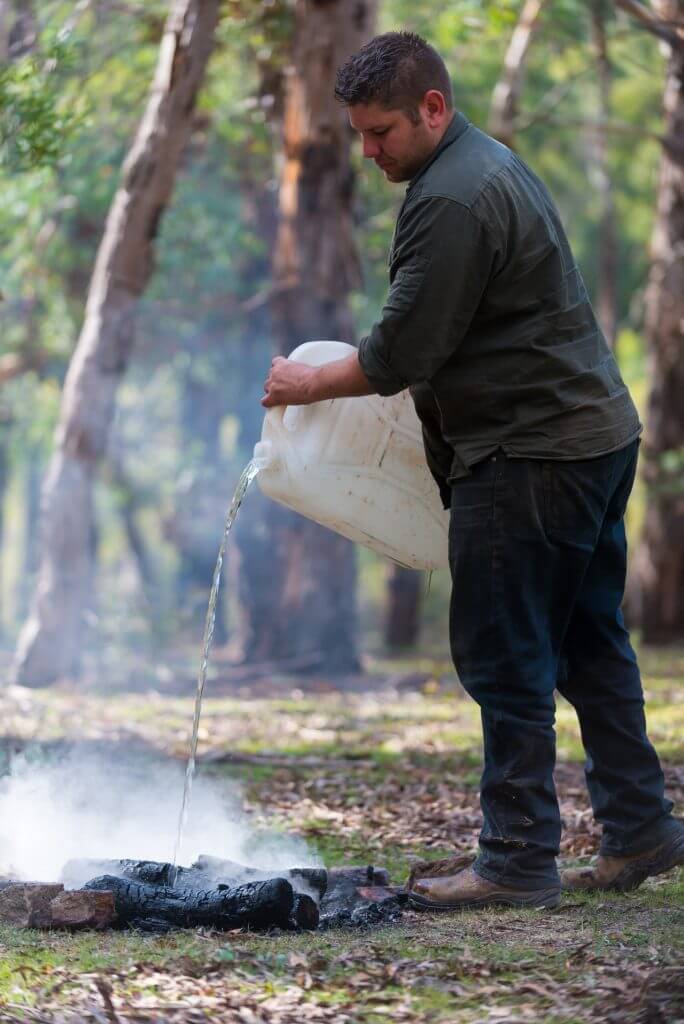
Here’s our common sense approach to managing risk at camp:
If we dwelled on all that could happen to us on a our daily basis or indeed at camp, life wouldn’t be much fun.
Instead, we’d probably leave this world choking on a celery stick indoors. You can’t ignore risks especially out in the elements but they’re a part of life, and it’s better to tackle them with a healthy attitude rather than react with fear if we’re to manage them well.
So here’s our common sense approach to spotting risks and staying safe at camp.

If you’re always surprised when your phone’s reception fails take heed as forewarned really is forearmed. Campground risks vary dramatically from place to place. Whether it’s limited communications, changing weather in tricky high country terrain; limited water and fuel supplies while tackling 40०C+ days and sub-zero desert nights; rising tides, soft sand, undertows and exposure at the beach; or mosquitoes and croc-infested waters in the tropics. The good news is that millions of travellers before you have successfully and safely enjoyed these diverse locations. And if you spend some time figuring out what you’re in for before you leave, you’ll know what you need in terms of navigation, communications and supplies, and you won’t over-pack for risks that don’t apply.
Just like your home, your rig is your haven so it pays to appraise your prospective site prior to set up — particularly if you camp in unconventional places. Is it sheltered or are you a prime target for gale-force winds? What about wildlife, do animals congregate here to feed or drink (try looking for tracks)? Is that flat site a dry creek bed at risk of flash flooding? Where will the rain go if I’m camped on that slope? And what about the trees above, am I too close? Gums are notorious for shedding limbs, especially after extended heat stress.
Locals and park rangers can word you up but if you look closely you can usually spot clues in the vegetation, rocks and on the ground. You needn’t have to find a new site depending on the risk, either, management could be a case of facing your camper in a certain way or circling your camp with ant sand.

The remote nature of camping creates specific challenges for the first responder, so you really need a first-aid kit that’s up to task. And while you’re sporting a new red and black case, why not brush up on your first-aid training as well. It’s not just the big stuff that will help get you or your family out of trouble, knowing how to bandage an ankle sprain or treat a nasty gash effectively can prevent minor ailments from escalating, especially when there’s no doctor down the road. If you’re leaving these kits in a vehicle cabin that can quickly exceed 50०C degrees, think about the included medications and find a suitable, secure alternative place to store them. Don’t forget to keep a tab on their expiry dates as well. Common over-the-counter treatments such as antihistamines for bites, and anti-inflammatories like ibuprofen are good additions to your first-aid arsenal that do better in cold storage. Don’t forget the antibacterial handwash.
Okay, so we all know how to read a weather report. But sometimes the conditions can get the better of us, especially if we’ve never experienced them before. Add the fact that not all campers are equipped with climate control and it’s a good case for developing a pre-emptive plan.
Make sure you pack and carry sufficient water. To stay adequately hydrated each party member will require 5L per day in warm weather at a minimum — or more if they’re active, and if you’re on a long-haul trip be sure to add a water filter to your tank’s inlet.
It’s tempting to pack just shorts and thongs for a warm weather trip but believe it or not loose-fitting clothing head to toe is better in some situations, especially if shade is limited or midges or flies are on the warpath. Hats, sunnies, sunscreen and repellents help keep you cool and comfortable in warm conditions especially if you plan to spend a lot of time outside. And for longer days outdoors, sunscreens with zinc enjoy better water resistance and last longer than those with chemical blockers. Also, consider the weather when planning your activities. If you’re desert touring, in particular, schedule activities outside of the heat of the day and consider the palliative benefits of a warm-weather dip — where it is safe, of course.
Campfires, thermals, flannels, a beanie and a windproof jacket go hand in hand with cool weather camping, giving you the confidence to really enjoy a warm cuppa on those brisk early dawns.
But braving the cool weather takes more than just attire. Air mattresses take up little space but I’d think twice before using them straight on the ground as the air inside provides no insulation whatsoever. Cotton and wool blankets on the other hand are also space-efficient but provide excellent warmth.
One final thing to remember, whether it’s hot, windy, muggy or just plain cold, kids and mature adults are at greater risk of exposure to extreme temperatures, so pack accordingly.
And if kids are having fun, they often ignore the signs, so you may need to keep an eye on this on their behalf.

Many of us keep tabs on what the weather’s doing but what about what’s recently transpired? Just as a campsite’s appearance changes due to previous conditions so too can the risks.
If your stay is coming off the back of dry weather, snakes and other reptiles might be on the move or nearby dam water could have turned to a stagnant breeding ground for mozzies, so avoid long grass, stock up on DEET and pack loose clothing even if it has turned mild.
Recent rains can damage or even shift tracks rendering maps out of date, bring down tree limbs and increase water levels, reducing access and increasing driver difficulty even on your way to camp. (Similar risks apply when travelling on foot.) So if you never carry recovery gear or tell friends where you are going, now’s the time to start doing so, and go in convoy if you’re heading off-road.
Some of our fondest memories involve camping out by the water, bringing fun and relief on the hottest, stickiest days. But water involves a great deal of risk, so it’s important we treat it with the respect it deserves.
Even kids who are confident swimmers need our attention around water, as the nature of campground water sources are less predictable than your local pool, with tides and obstacles concealed beneath the calm surface. In fact, you and your mates really need to look out for each other as well: so leave the drinks behind and take a friend if you’re going swimming.
If you’re camping out near a river, recognise that water levels can quickly rise. Many rivers are tidal, but if you see an uncharacteristic increase in the speed of the flow and unexpected rising waters, consider an exit plan especially if where you are is difficult to access or you have limited comms.
Even with the increased popularity of power and diesel alternatives, gas is still a commonly used, affordable source of warmth and illumination at camp. But gas systems emit carbon monoxide and require ventilation for safe operation so you can’t muck around.

Campfires are an iconic part of camping, but aren’t without risk especially when they’re poorly built. Here are some top tips for safely lighting a fire.
Many established campgrounds that permit fires will provide a predefined space to set one up but if yours doesn’t have that or you’re free camping in the true sense, you may have to prepare a spot.
If one isn’t found, clear space around your fire by removing any branches, leaves or twigs that could catch light with at least a 2-3 metre radius.
Dig a 30cm trench to house the fire and prevent embers from flying out. Create a border around the fire using large solid rocks.
You will need to choose your rocks carefully as some types can explode when they get too hot. There are two main reasons why this occurs. Firstly, if the rock contains moisture inside, the moisture turns to steam when heated up which pressurises the rock. Secondly, layered rocks like sandstone or limestone are more likely to split or explode because of the weaker bonds between their layers. So as a general rule, stick with granite, marble or slate, and steer clear of rocks with a smooth surface, which is a tell-tail sign that they’re from a river and contain high amounts of moisture. So any river rocks should be out of the question for that matter!
Cooking appliances get very hot over coals so we know to take care with them, but cast iron cookware carries an extra risk that can catch you off guard. It is strong but brittle and can crack if it is dropped or even when subjected to temperature extremes, say from a cool water wash after being removed from the fire. So store it carefully and wait until it has cooled before soaking it after dinner.
That sand covered fire may look extinguished but the coals underneath can remain hot for more than 24 hours and inflict serious burns on to unsuspecting holidaymakers (often children) who arrive after you leave. So pay your fellow campers some respect and put out your campfire with a decent drenching; you don’t need to be too fussy about the source. Dirty dishwater will do the job.
At Mars Campers we work hard to develop the best value for money camper trailers with a view of helping you create memorable experiences with your loved ones.
Did you find this information useful? If you found even one tiny nugget in this material to be useful, please do forward it to three of your friends. I am sure they will thank you for it. You can send it to them via email, Twitter, Facebook or post it on your own website.